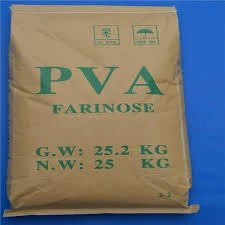Hydroxypropyl Methylcellulose (HPMC) A Versatile Polymer in Modern Applications
Hydroxypropyl methylcellulose (HPMC) is a semi-synthetic polymer derived from cellulose, which is one of the most abundant natural polymers found in plants. HPMC has gained significant attention due to its versatile properties and widespread applications in various industries. This article explores the chemistry, properties, and applications of HPMC, highlighting its importance in contemporary formulations and products.
Chemical Structure and Properties
HPMC is produced through the etherification of cellulose, where hydroxypropyl and methyl groups are introduced into the cellulose chains. This modification results in enhanced solubility in water and improved thermal stability, making HPMC a unique compound among similar cellulose derivatives. The degree of substitution (DS) – the average number of hydroxyl groups replaced by hydroxypropyl or methyl groups – influences the polymer's solubility and rheological properties.
HPMC manifests as a white, odorless powder that is stable under various pH levels. Its molecular weight can range widely, from 15,000 to several hundred thousand daltons, which affects its viscosity and film-forming capabilities. One of the notable properties of HPMC is its ability to swell in water without dissolving, creating a gel-like consistency that is particularly desirable in many formulations.
Applications of HPMC
1. Pharmaceuticals HPMC plays a crucial role in the pharmaceutical industry as an excipient in drug formulations. Its properties allow for controlled release of active ingredients, making it ideal for sustained-release formulations. HPMC is utilized in tablets, capsules, and as a binder in granulation processes. Additionally, its film-forming ability makes it a popular choice for coatings, enhancing the stability and appearance of various medication forms.
hydroxypropyl methyl cellulose (hpmc)

2. Food Industry HPMC is also used as a food additive that serves multiple functions, including thickening, emulsifying, and stabilizing. It is especially popular in gluten-free baking, where it helps improve the texture and moisture retention of products. HPMC’s ability to form gels is valuable in creating low-fat products, allowing for a satisfactory mouthfeel without the addition of excessive fat.
3. Construction In the construction industry, HPMC is widely employed in cement and plaster mixtures. It enhances the workability of the mixtures, allowing for easier application and improved adhesion to surfaces. Moreover, HPMC contributes to water retention, preventing the rapid drying of applied materials, which ensures better curing properties.
4. Cosmetics and Personal Care HPMC is a common ingredient in various cosmetic formulations, including creams, lotions, and gels. Its thickening and stabilizing characteristics improve product consistency and enhance user experience. Additionally, its film-forming properties are valuable in hair care products and makeup, providing a smooth application and long-lasting effects.
5. Biomedical Applications Research is continually expanding the use of HPMC in biomedical fields. It has shown promise as a material for controlled drug delivery systems and scaffolds in tissue engineering. HPMC’s biocompatibility and ability to form hydrogels make it suitable for applications in regenerative medicine and other therapeutic areas.
Conclusion
Hydroxypropyl methylcellulose (HPMC) stands out as a multifunctional polymer with diverse applications across multiple industries. Its unique chemical structure endows it with properties that are indispensable in pharmaceuticals, food, construction, cosmetics, and biomedical fields. As research and technology progress, the potential for innovative uses of HPMC continues to expand, promising to enhance product formulations and improve consumer experiences. Whether improving drug delivery systems or enhancing food texture, HPMC remains a vital component of many modern applications, embodying the blend of nature and innovation in material science.
-
Rdp Powder: Key Considerations for Wholesalers in the Building Materials IndustryNewsJul.08,2025
-
Key Considerations for Wholesalers: Navigating the World of Hpmc - Based ProductsNewsJul.08,2025
-
Hpmc Detergent: Key Considerations for WholesalersNewsJul.08,2025
-
Key Considerations for Wholesalers: China Hpmc For Tile Adhesive, Coating Additives, Concrete Additives, and MoreNewsJul.08,2025
-
Crucial Considerations for Wholesalers: Navigating the World of Construction MaterialsNewsJul.08,2025
-
Key Considerations for Wholesalers Sourcing Additive For Cement, Additive For Concrete, Additive For Putty from Additive Manufacturer Shijiazhuang Gaocheng District Yongfeng Cellulose Co., Ltd.NewsJul.08,2025




